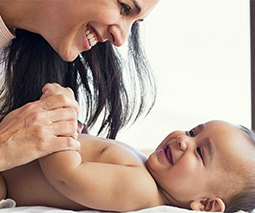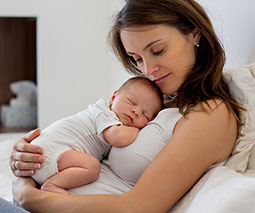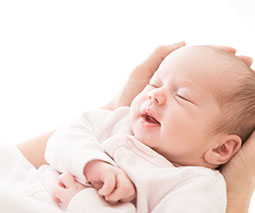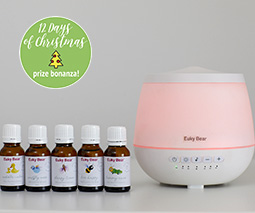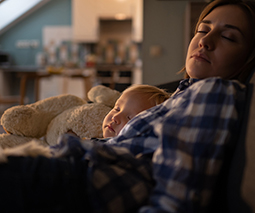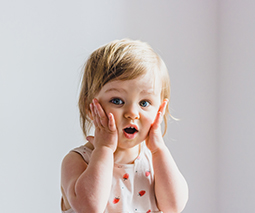One for the dads: How to change a baby girl’s nappy and clean her genital area

Dads who welcome a baby girl often find themselves venturing into the unfamiliar territory of cleaning their daughter’s genitals when they change their nappy.
No need to baulk at the task, though. Baby girl genitals are super easy to care for and simple to keep clean and comfortable. Here’s how …
Nappy change time
Firstly, be sure to have everything at the ready before you begin changing your daughter’s nappy.
That means gentle and baby-friendly wipes, a new nappy, new clothing if need be, somewhere to put the used wipes such as a nappy sack/nappy bag and nappy cream.
Change on a change table or on a changing pad – or even a clean towel – on the floor if you don’t have one of those.
Make sure you keep your hands and eyes on your bub at all times. Babies can wriggle away or fall in a flash, so focus is key.
Remove the wet or poopy nappy by unsealing the front tabs.
Now let’s get to the bits we need to clean. Hold your baby’s feet together (sole to sole) and gently flex their legs up towards their tummy, this will allow you easy access to clean the nappy area.
Quickly pop the used nappy out of reach of your baby. You can tidy it up once the baby is safely changed.
Pro tip: Stinky situation? Try mouth breathing only if you are a bit squeamish or sensitive to smells.
Grab a couple of wipes and clean your baby up. Just do a general once over concentrating on the back and bottom first. Then pop your baby back down on your clean change mat or towel.
Now begin a more detailed tidy up of the genital area and surrounds.
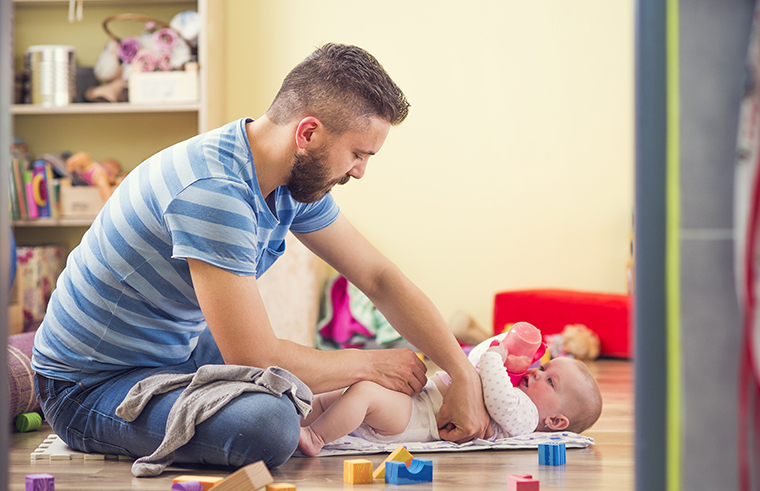
How to wipe and clean your baby girl’s genitals
Baby girls must be wiped from front to back, so that you aren’t wiping bacteria from their bottom into their sensitive genital area (where it might enter the vagina or urethra and cause an infection.)
Baby girls should also be wiped very gently and quickly from the inside to the outside of the genital area. This is especially important if there is poop on her genitals. You want to keep bacteria away from the vulva (the exterior genitals) and vagina. There is no need to dig around in there though. Just a swift and careful tidy up of the bits you can see and removal of traces of pee and any poop is all that is required.
Pro tip: If your baby has very sensitive or has sore-looking skin, you can use cotton balls dipped in warm water for this part of the process instead of baby wipes.
Lightly pat dry (don’t wipe) with a clean face washer or tissue to avoid nappy rash. You can also let your baby air dry and distract them with some fun games for a minute or two, if you prefer.
Be sure to wipe out the folds of the thigh and the tops of the thighs, where moisture can accumulate. If left to its own devices babies can get very sore in those hidden folds. Again, dry them lightly – patting not wiping.
Apply any nappy cream or baby barrier creams to the clean, dry skin.
Then pop on a new nappy and get your baby dressed.
Honestly? It sounds like a lot, but once you’ve done it a couple of times it becomes second nature.
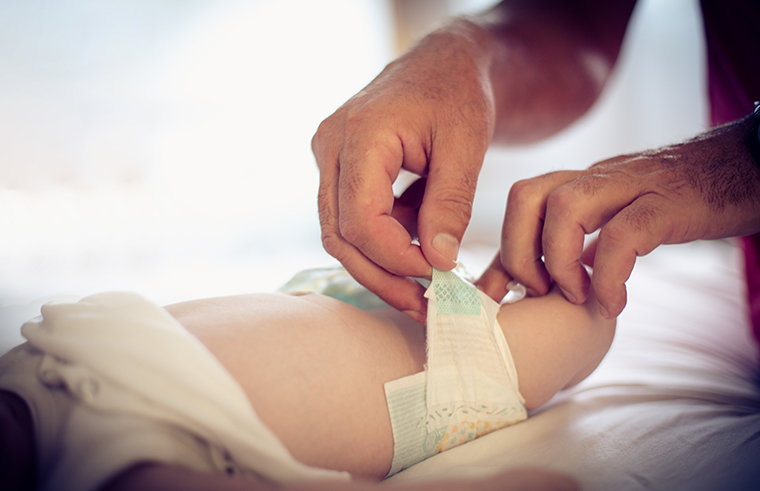
Normal vaginal discharge in baby girls
If you notice a white-ish discharge on your baby girl’s genitals, fear not. This is a normal discharge and you don’t need to try and remove it.
If your newborn daughter has a blood-tinged discharge in the first few weeks after birth, fear not. This is also normal and is caused by the maternal hormones still in your baby’s system. It will go away by itself.
If you are concerned about a discharge see your GP or maternal child health nurse for advice.
When to change your baby
The Royal Children’s Hospital explains that every baby is different, and babies will often poop or wet their nappy during or just after a feed.
If your baby often has a wet or poopy nappy after a feed, to avoid the disturbance of having to change their nappy twice, it would be better to change your baby after the feed.
If your baby has reflux, they may vomit if they are moved too much with a full tummy, so you might like to change them before a feed.
Most experienced parents go for the ‘sniff test’ or have a feel of the nappy from the outside or consult indicators on nappies to alert them to when their baby needs to be changed.
